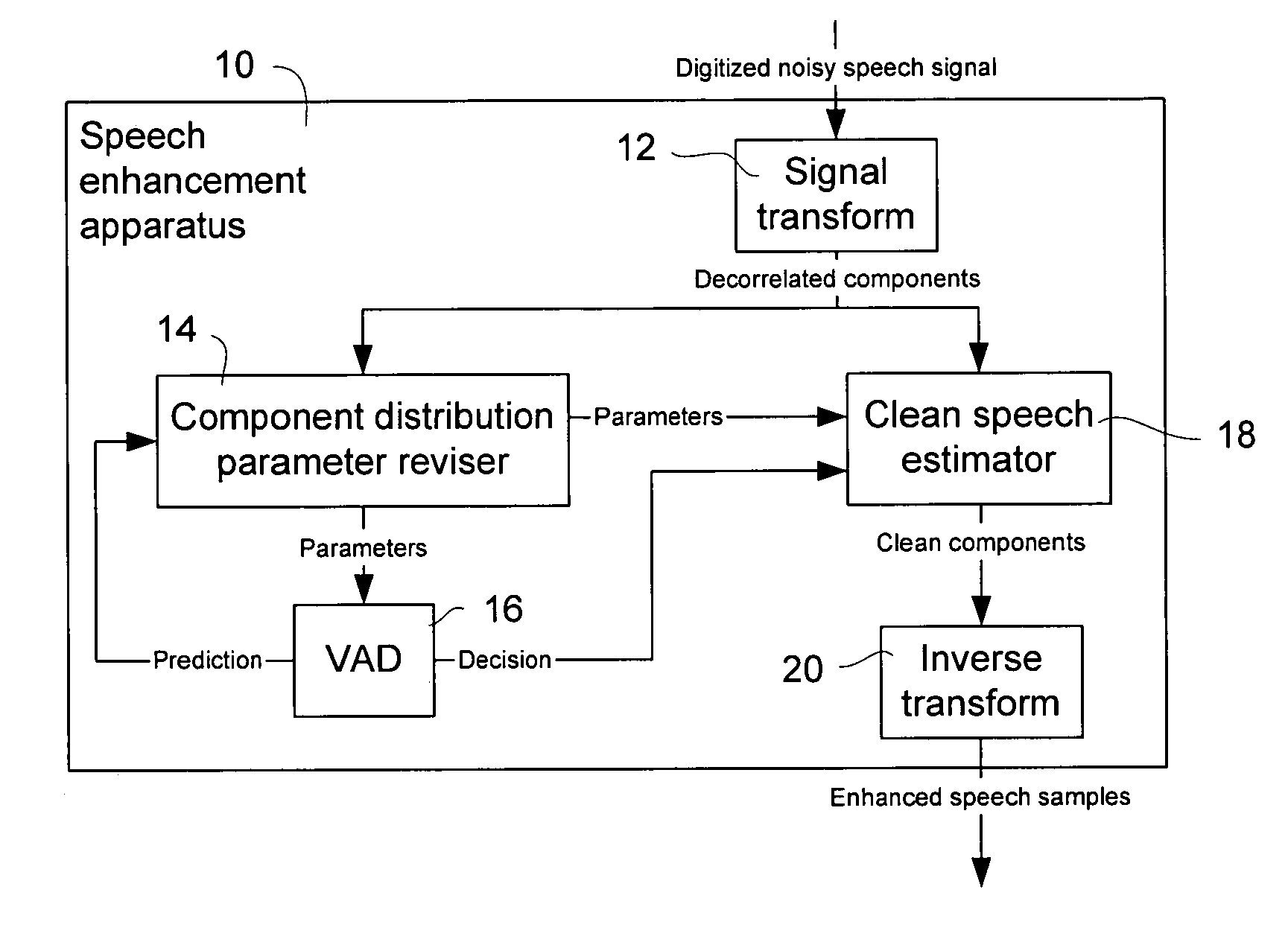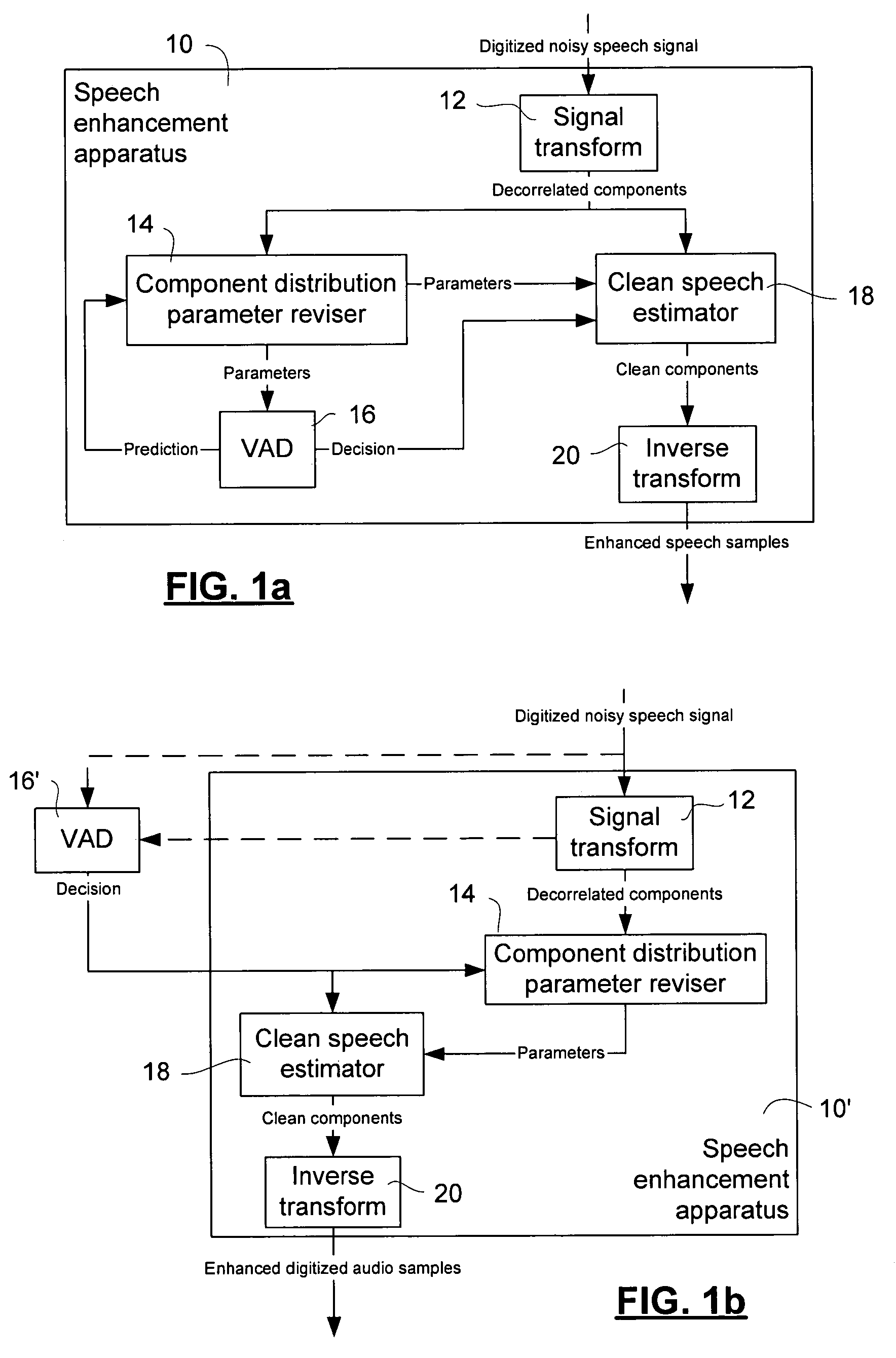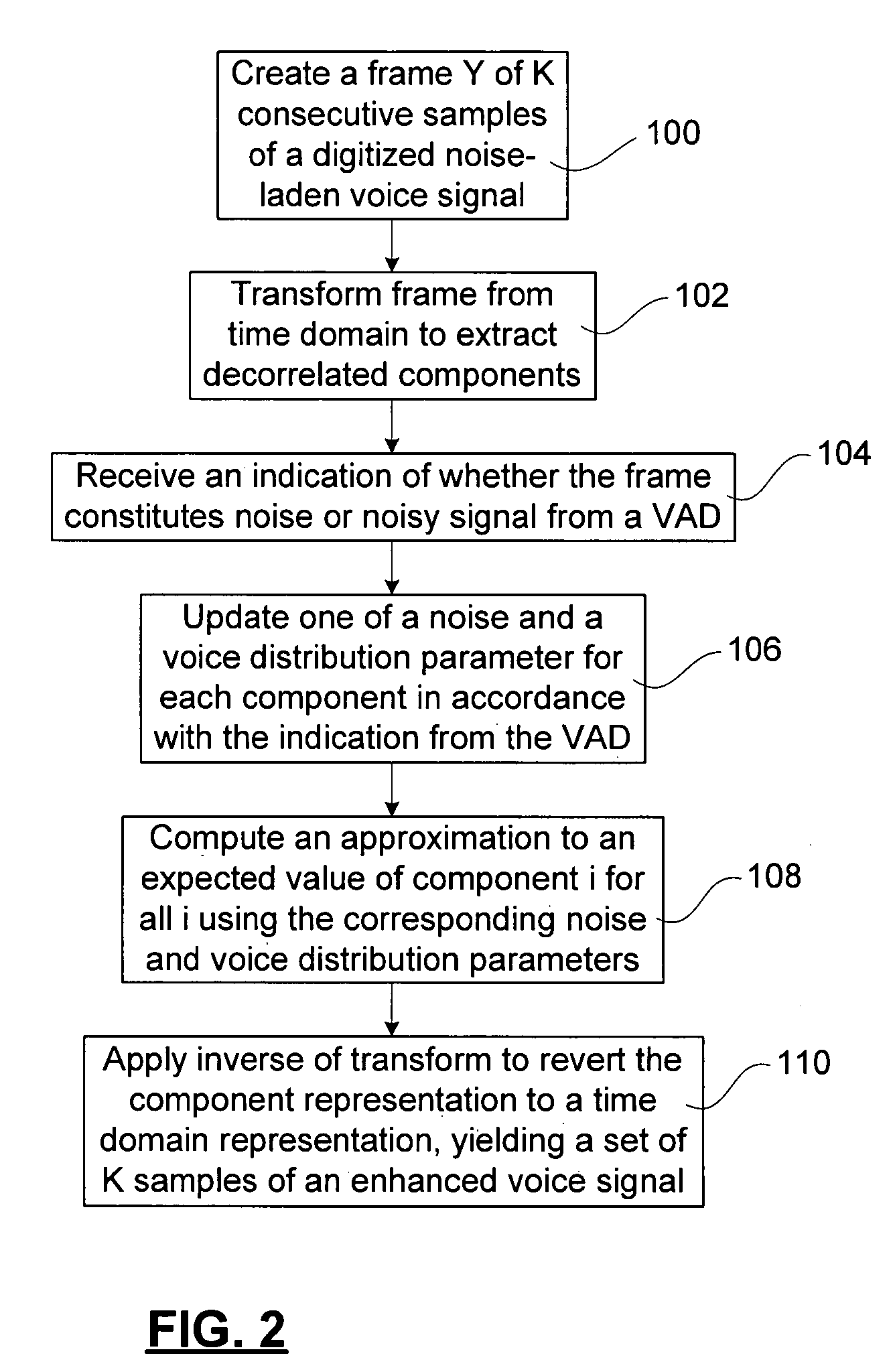Method and system for speech processing for enhancement and detection
a speech processing and speech technology, applied in the field of digital voice processing, can solve the problems of predefined fixed resolution, noise removal from noise-contaminated voice signals, and each has its own computational complexity, and achieve the effect of efficient and reliabl
- Summary
- Abstract
- Description
- Claims
- Application Information
AI Technical Summary
Benefits of technology
Problems solved by technology
Method used
Image
Examples
Embodiment Construction
[0032]The invention differentiates noise from signal by the characteristic distributions normally associated with each. It has been found that the components of a signal (in particular speech signals, although the same may apply to other signals) are characterized by a Laplacian distribution, whereas noise is characterized by a Gaussian distribution. This fact is used to differentiate noise from signal in a noise-contaminated voice signal. Preferably, parameters that characterize the Laplacian and Gaussian distributions are maintained, and a composite distribution is used to identify the signal and the noise contributions to an instant value of the respective components. This differentiation can be used for example to detect voice activity on a noise-contaminated channel, and / or to enhance speech.
[0033]FIG. 1a schematically illustrates principal functional blocks of a speech enhancement apparatus 10 in accordance with the invention. The speech enhancement apparatus...
PUM
 Login to View More
Login to View More Abstract
Description
Claims
Application Information
 Login to View More
Login to View More - R&D
- Intellectual Property
- Life Sciences
- Materials
- Tech Scout
- Unparalleled Data Quality
- Higher Quality Content
- 60% Fewer Hallucinations
Browse by: Latest US Patents, China's latest patents, Technical Efficacy Thesaurus, Application Domain, Technology Topic, Popular Technical Reports.
© 2025 PatSnap. All rights reserved.Legal|Privacy policy|Modern Slavery Act Transparency Statement|Sitemap|About US| Contact US: help@patsnap.com



